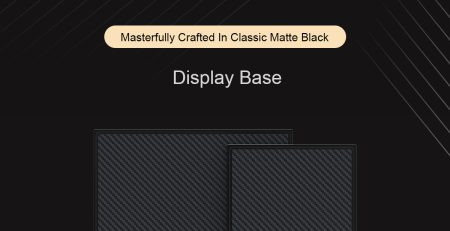
WiiM Pro Plus – Review & Measurements
dennis2023-08-22T09:59:44+01:00Hi Folks,
Here is another review, measurements-based, today about the WiiM Pro Plus (or “Pro+”). While some rumors already mentioned it for the last couple of months, it is just launched today (August 8) officially. The WiiM Pro Plus comes with a $220 MSRP (planned to be 249€ in EU), so quite a price jump from the original WiiM Pro ($149/179€), that is still less than one year old. The unit I got is a preproduction sample, that has been sent to me directly by WiiM, after they contacted me for evaluating their new product, which of course I accepted.
To ruin the suspense, the WiiM Pro Plus is nothing but a WiiM Pro, with just an upgraded DAC (and ADC). When I reviewed the WiiM Pro, I gave it my recommendation considering the serious amount of features, the excellent digital performance and a decent app and ecosystem. Regarding analog circuit design, tho, the performance was nothing better than mediocre. The Pro Plus now comes with new OPAMPS and an AKM AK4493SEQ chip, which is claimed to be a significant upgrade over the TI (PCM5121?) DAC that we often see in Streamers in this price range. That, we will verify.
Note: These measurements will be mainly focused on the supposed improvements brought by the Pro Plus over the regular Pro, so specifically on the DAC performance. For any other analysis of features and connectivity, please read my review of the WiiM Pro here.
Note: Because the preproduction unit I got from WiiM came with a lot of scratches and molding marks, it would not have been a great subject for my type of photography. This time, I will then post promotional pictures (except for the very shady one above) instead.
As you may see, the Pro Plus is virtually indistinguishable from the original Pro. The chassis is exactly the same, as are the outputs and inputs. The main difference is that the Pro Plus comes with a glossy black coating, instead of the greyish color of the Pro. I honestly do not like this finish at all. It will be either a fingerprint or a dust magnet, in addition to be sensitive to scratches. The biggest (really, the only) addition, is that the WiiM Remote is now supplied. This one actually retails separately for $20 (and is hardly available anywhere in Europe !), so it sure is a very cool adding.
One last thing, though: While we waited months for the WiiM Pro to finally get its Roon Ready certification, the Pro Plus is still not certified as of this writing. I assume that this will be updated anytime soon and that Roon is working on it at some point.
Disclaimer: Measurements you are about to see are not intended to be as precise or extensive than what you get from a 30k€ AP. There is obviously both hardware and software limitations here, so not quite apples to apples comparison with Amir’s testing. Still, this data is enough to have a pretty good idea if the gear is bad or not, stellar, broken, or sub-par…
– Instruments : RME ADI-2/4 PRO SE. E1DA Cosmos ADC (Grade B), Minimum phase filter. E1DA Cosmos APU 60dB preamp is used for DR measurements. Output voltage is measured separately, using a DMM with a 0dBFS 1kHz tone.
– Software : REW V5.20.14, Multitone Loopback Analyzer 1.0.87 and RMAA 6.4.5 PRO,
– Method : 8 runs for each test, then I choose the closest to the average. Bandwidth and sampling rate to be specified for each test.
Note: Prior to this publication, I showed my measurements to WiiM.
|
Tests
|
Manufacturer’s specs
|
Results (L & R)
|
Rating
|
|
Noise Level (REW)
|
/
|
-122.5dBA
|
Stellar
|
|
Dynamic Range (REW)
|
120dBA
|
119.3dB
|
Excellent
|
|
THD (REW)
|
/
|
0.00022%
|
Very Good
|
|
THD+Noise / SINAD (REW)
|
-108dB
|
-111.6dB
|
Excellent
|
|
IMD SMPTE (REW)
|
/
|
-92.3dB
|
Good
|
|
Stereo crosstalk (RMAA)
|
/
|
-119.2dB
|
Excellent
|
|
IMD+Noise @10 kHz (RMAA)
|
/
|
0.00039%
|
Excellent
|
|
Multitone 32 TD+N (Multitone)
|
/
|
-105.1dB
|
Excellent
|
Total Harmonic Distortion + Noise (SINAD) – 24b/44.1kHz
Frequency Response – 24b/44.1kHz
Noise Level – 24b/44.1kHz
Dynamic Range – 24b/44.1kHz
Intermodulation Distortion SMPTE – 24b/44.1kHz
Intermodulation Distortion SMPTE Versus Level – 24b/44.1kHz
THD Versus Frequency – 24b/48kHz
Jitter – 24b/48kHz
Multitone 32 – 24b/192kHz
Long story short: the Pro Plus absolutely wipe the floor with the regular Pro. Starting with a SINAD better by 24dB. It nails almost every test, except for the IMD SMPTE one, that is not exactly showing the textbook perfect behavior I would expect for the AK4493. I measured better from other implementation of this chip in this very scenario. Obviously, it also impacts the SMPTE VS Level test: While not showing the “Hump” we often see with some ESS DACs, it should go down to about -110dB before rising at full output. Otherwise, it just performs great. Period.
Note: For repeatability purpose, you may also check the (very extensive) measurements provided by @onlyoneme at the WiiM forum. Both our results essentially match, assuming we use different methodology and hardware.
The first observable modification, before any measurements, is about the sampling frequency. The ADC is now set at 192kHz, instead of 48kHz before. Fortunately, the signal remains very stable through whatever Toslink or Coax output. About the results, you can already note that some progress have been made on that field. Sure, THD+N is very similar to the regular Pro’s analog input. But it can now carry a stronger signal (original Pro started to clipp at 1.20V). It is now usable to be feed by more sources.
Then, about the absolute limits of the ADC input:
It now may go way higher, until 2V, whereas the performance is degrading. Passing 2V (and reaching full output of the C100 DAC), the ADC is finally clipping, which is a bummer. We still cannot rely on it for many sources, such as >2Vrms CD Players without variable output. Like the original pro, tho, this level of performance will be perfectly suitable for the Pro Plus to be fed by a phono/turntable signal.
Note: For further investigation about the ADC performance, I again recommend checking the second part of measurements from @onlyoneme posted at WiiM forum.










